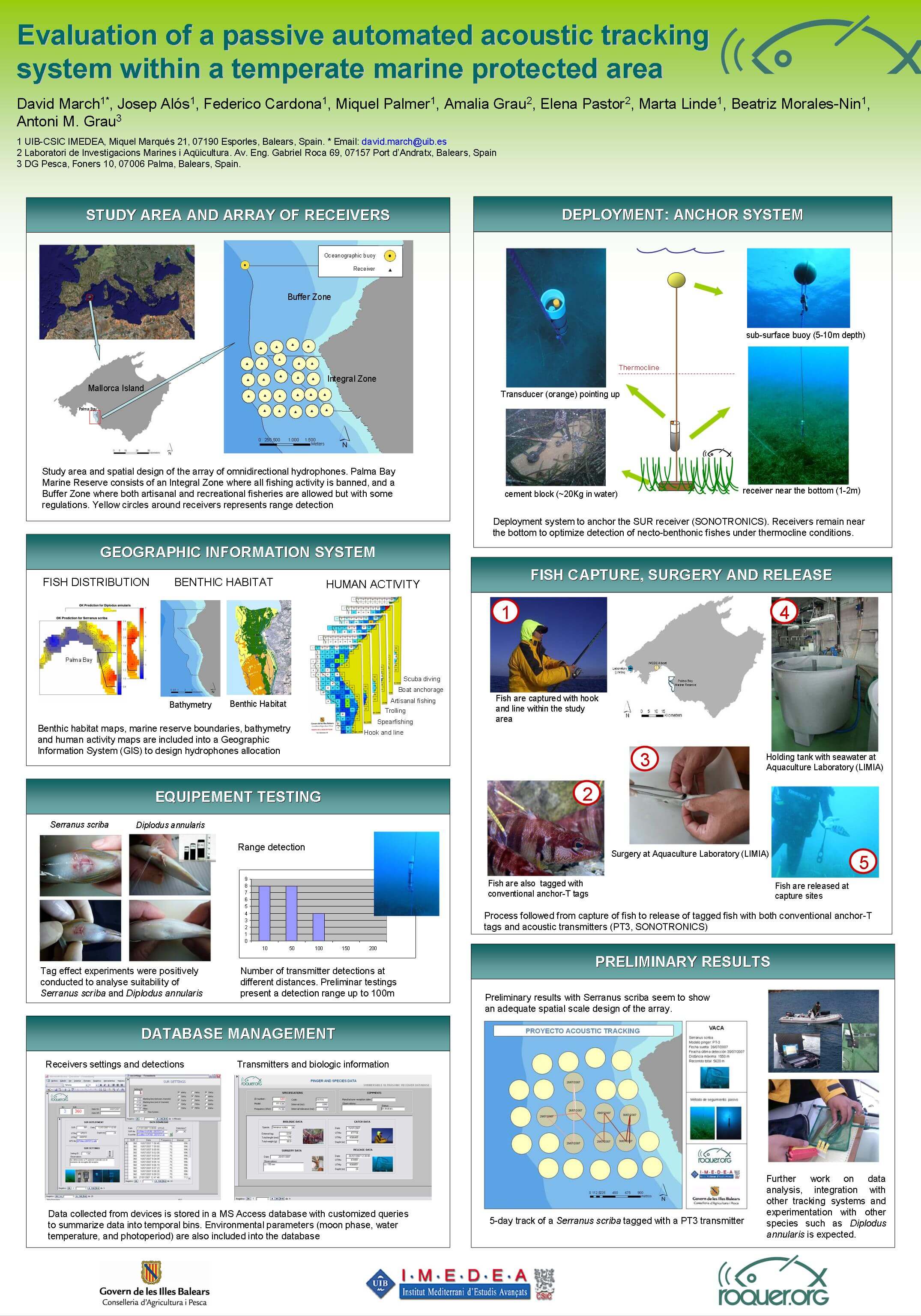Sonotronics uses multiple methods to identify its transmitters. First, the combination of Pulse Interval (PI) and frequency uniquely defines a particular transmitter. Given the availability of over 25 different frequencies, and the allowing 10mS spacing to allow unique intervals from 870mS to 1500mS, this allows for over 1500 simple combinations, and custom intervals and frequencies are available to allow for more than double this amount. In addition, Sonotronics transmitters employ a unique aural code that sounds as a distinct pattern of pings when listening via a receivers’ speaker or headphone. This feature is similar in concept to the use of Morse code in radio communications, allowing for detection and identification under adverse conditions or at extreme ranges.
Because source level is only a portion of information necessary to evaluate the performance of an acoustic system, Sonotronics quotes achievable ranges rather than source level in most publications. The combination of very narrow band receivers (500Hz total) and directional hydrophones provide for excellent detection ranges with even modest power transmitters. An expression used to predict range is: NL-DI = SL-TL, where NL is the noise level, and is bandwidth dependant, DI is the directivity index of the hydrophone, TL is the transmission loss between transmitter and hydrophone due to range and absorption, and SL is the source level of the transmitter: range is inferred by the distance component of TL. Note that NL is a function of bandwidth (10*logBW) – the difference between an SUR with a bandwidth of 500Hz and a receiver with a 6000Hz bandwidth is over 10db,
With that said, the normal source levels (ref 1uPascal @ 1m) of Sonotronics’ transmitters are as follows:
| PT-1 | 128-132db |
| PT-2,3; IBT96-1,2 | 134-136db |
| CT-82-2, CT-05-36, EMT-01-1 | 142-144db |
| CHP87, DT97, EMT01-2 | 146-149db |
| EMT-01-3 | 161-167db |
As mentioned in the FAQ above, this depends on several factors, including the losses in between transmitter and receiver, and the transmitter source level. Some real life examples follow:
- St. Claire River Near Detroit, MI. 6/23/2005: SUR deployed in 5 feet of water near the shore, depth increases to 50m, CT-05 suspended at 1m. Reliable detections at 400m.
- Lake Pleasant at Cave Creek, AZ: CHP transmitters detected regularly between 400m and 500m with an array of 6 SUR’s.
Ranges stated in the Product Guide (up to 1km, up to 3km, etc.) are stated for manual tracking, using a narrow band receiver such as USR-96 and USR-08, and a directional hydrophone such as the DH-4, under ‘reasonable conditions’. These include calm sea states, and waters favorable to acoustic propagation. A few factors that reduce range include:
- Shallow environments – Environments in less than 10m of water can reduce the range you can achieve from acoustic transmitters. For example, transmitters with a range of up to 3km were detected at around 500m in 3m depth water.
- Temperature or Salinity stratified environments – When there is a temperature or salinity gradient in the water column where a transmitter is located, there is an effect called ray bending that occurs. Because the speed of sound in water is a function of temperature and salinity, you can end up with “layers” in which the speed of sound is different. Due to Snell’s law, the sound signal is bent at the interface between each layer. The end result of this is that sound can be warped downward, reducing range. Additionally, a thermocline (distinct division between two temperature layers) may reduce ranges significantly: under extreme cases, sound may not reach the surface at all. One technique to overcome this is the use of an omnidirectional hydrophone (such as a TH-2) with a long cable to penetrate the thermocline.
Ultrasonic (acoustic) transmitters emit high frequency sound which propagates mechanically, while radio transmitters emit electromagnetic energy. Generally acoustic transmitters are preferred in deep (>5m) and/or conductive waters. Radio transmitters are preferred in shallow water, especially ‘babbling’ waters.
Common rule of thumb is the weight of the transmitter measured in water should not exceed 1.25% of the weight of the animal measured in air. In other words, taking the published “water-weight” of a transmitter, then multiplying by 80, will indicate the smallest weight animal to be tagged.
Please reference the following for supporting data, and for general information:
THE LIMITATIOINS OF FISH TRACKING SYSTEMS: ACOUSTIC AND SATELLITE TECHNIQUES. By 1. G. Priede, NOAA Technical Memorandum, published May 1986
D.L. BRUMBAUGH: AFS PRESENTATION ON ACOUSTIC TRACKING SYSTEMS. By D. L. Brumbaugh
FISHERIES TECHNIQUES, edited by Larry Nielsen and David Johnson, available from American Fisheries Society





